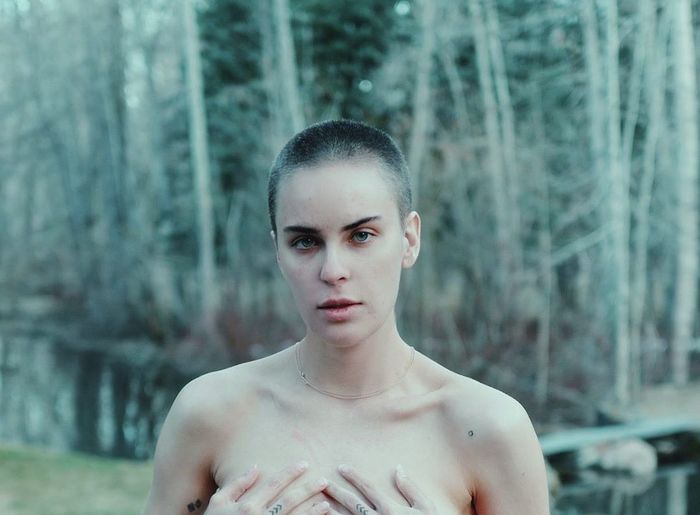An ode to the fringe
With lockdown haircuts replacing fashion trends, the spontaneous fringe has found its place in the list of people’s favourite isolation activities. Martha French looks at what it means to have a fringe, and who we should look to for some cutting inspiration
I have had several fringes throughout my life, some more successful than others (namely the ones I didn’t cut myself, as a fair warning). There was the classic “Broke Into The Arts-And-Crafts Box and Crept Behind The Sofa To Create a Zig-Zagging Masterpiece” of 2004, and of course the “This is How Taylor Swift Has Her Hair, So it is Absolutely How I Must Also Have Mine” of 2012. But I consider the current incarnation to be my greatest achievement: a perfect wisp-to-structure ratio and the ideal length - well out of the way of my eyes but still securely covering my forehead. Best of all, I truly can’t remember the last time I got my eyebrows threaded. It is a way of looking done-up without ever actually having to do anything (other than the occasional trim), and now also happens to make up somewhere between 40-70% of my identity.
And so it is inevitable that people are reaching for the D-I-Y fringe as a means of reinvention in lockdown, perhaps even believing that it will somehow revolutionise their perception not only of themselves, but of human existence in its entirety. And they are absolutely right. A fringe is a way of life, and (fun fact!) it also counts as a personality trait, just like having once read half a Susan Sontag essay or thinking The Smiths’ earlier stuff is actually where it’s at. To quote Fleabag: “Hair is EVERYTHING”. And a fringe is not only everything, but can be anything - think Anna Wintour’s full-on slab, Jane Birkin’s choppy number, Rooney Mara’s more cropped interpretation. The possibilities are endless - and all you need is a rusting pair of Ikea kitchen scissors and a bit of gutsiness.
After the initial adjustment period is a new-found sense of purpose, of self-belief, of zest for life
But, like all crafts, in order to perfect the side-swept tendrils that you so desire, you must truly understand their history. You cannot flaunt your fringe without acknowledging your debt to French actress Claudette Colbert’s style in the 1934 film Cleopatra, epochal enough to start the myth that Cleopatra herself had one (in actuality, she would have had a buzzcut, which is nearly as cool), and Jazz Age icon Louise Brooks, who more or less invented the now classic bob-and-slick-fringe combo in the 1920s. Honourable mentions go to Audrey Hepburn’s stubby and yet somehow magnificent take in Breakfast at Tiffany’s, Agnetha Fältskog’s platinum, seventies dreamscape, and - more recently - the dense, parted cut adorned by Alexa Chung.
And all this is before we’ve even talked man-bangs: why not take inspiration from the tempestuous beast that was Keanu Reeves’ hair circa 1989? Or, alternatively, rein in the mane completely, keeping it uncluttered and straight-edge à la Spock? What’s more, if the aforementioned examples feel a bit too radical for you, I would argue that curtains come under the umbrella term. And I don’t think I am making any unfair assumptions by saying that if they’re good enough for 1990s Leonardo DiCaprio and Hugh Grant, they are most definitely good enough for you. So, whether you opt for two strands framing your face or the full-blown thing, your fringe has a history.
And this is what is so exciting about the haircut - you are adding yourself to a long, prolific legacy, taking inspiration (whether you know it or not) from everyone from your grandma to Joni Mitchell to Normal People’s Marianne. The only minor downside is - and I am truly sorry to say this - if you cut your own fringe in front of the mirror and cry “Oh dear God, what have I done?” three times, your own personal Connell Waldron - silver Argos chain and all - will not appear. Trust me, I’ve tried. However, what I can promise - after the initial adjustment period (i.e. pangs of regret for 3-5 working days) - is a new-found sense of purpose, of self-belief, of zest for life.
For a fringe is not only the greatest (and cheapest) accessory you will ever own, it is an artform, in all its wispy, wonky glory.
 News / CUP announces funding scheme for under-represented academics19 December 2025
News / CUP announces funding scheme for under-represented academics19 December 2025 News / Cambridge welcomes UK rejoining the Erasmus scheme20 December 2025
News / Cambridge welcomes UK rejoining the Erasmus scheme20 December 2025 Comment / Yes, I’m brown – but I have more important things to say22 December 2025
Comment / Yes, I’m brown – but I have more important things to say22 December 2025 News / SU reluctantly registers controversial women’s soc18 December 2025
News / SU reluctantly registers controversial women’s soc18 December 2025 Film & TV / Timothée Chalamet and the era-fication of film marketing21 December 2025
Film & TV / Timothée Chalamet and the era-fication of film marketing21 December 2025









